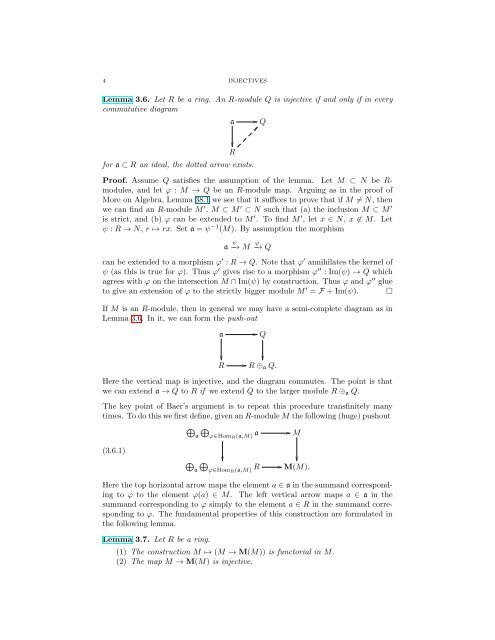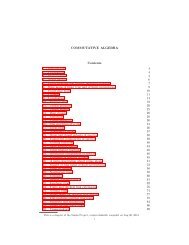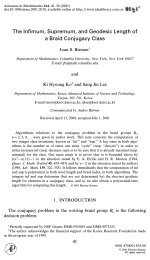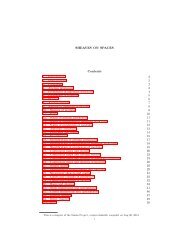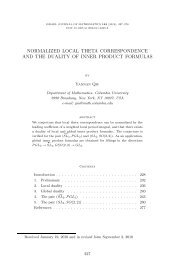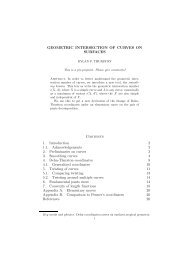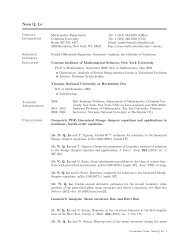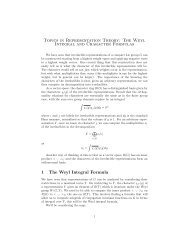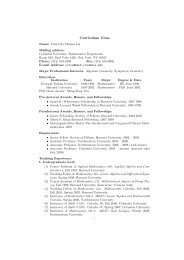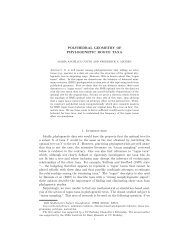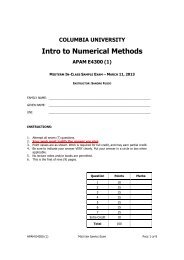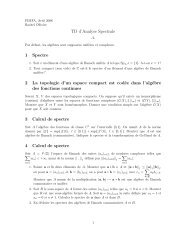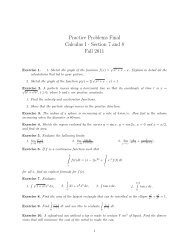INJECTIVES Contents 1. Introduction 1 2. Modules ... - Stacks Project
INJECTIVES Contents 1. Introduction 1 2. Modules ... - Stacks Project
INJECTIVES Contents 1. Introduction 1 2. Modules ... - Stacks Project
You also want an ePaper? Increase the reach of your titles
YUMPU automatically turns print PDFs into web optimized ePapers that Google loves.
4 <strong>INJECTIVES</strong><br />
Lemma 3.6. Let R be a ring. An R-module Q is injective if and only if in every<br />
commutative diagram<br />
a <br />
<br />
Q<br />
<br />
R<br />
for a ⊂ R an ideal, the dotted arrow exists.<br />
Proof. Assume Q satisfies the assumption of the lemma. Let M ⊂ N be Rmodules,<br />
and let ϕ : M → Q be an R-module map. Arguing as in the proof of<br />
More on Algebra, Lemma 38.1 we see that it suffices to prove that if M = N, then<br />
we can find an R-module M ′ , M ⊂ M ′ ⊂ N such that (a) the inclusion M ⊂ M ′<br />
is strict, and (b) ϕ can be extended to M ′ . To find M ′ , let x ∈ N, x ∈ M. Let<br />
ψ : R → N, r ↦→ rx. Set a = ψ −1 (M). By assumption the morphism<br />
a ψ −→ M ϕ −→ Q<br />
can be extended to a morphism ϕ ′ : R → Q. Note that ϕ ′ annihilates the kernel of<br />
ψ (as this is true for ϕ). Thus ϕ ′ gives rise to a morphism ϕ ′′ : Im(ψ) → Q which<br />
agrees with ϕ on the intersection M ∩ Im(ψ) by construction. Thus ϕ and ϕ ′′ glue<br />
to give an extension of ϕ to the strictly bigger module M ′ = F + Im(ψ). <br />
If M is an R-module, then in general we may have a semi-complete diagram as in<br />
Lemma 3.6. In it, we can form the push-out<br />
a<br />
<br />
R<br />
<br />
Q<br />
<br />
<br />
R ⊕a Q.<br />
Here the vertical map is injective, and the diagram commutes. The point is that<br />
we can extend a → Q to R if we extend Q to the larger module R ⊕a Q.<br />
The key point of Baer’s argument is to repeat this procedure transfinitely many<br />
times. To do this we first define, given an R-module M the following (huge) pushout<br />
<br />
a ϕ∈HomR(a,M) a <br />
M<br />
(3.6.1)<br />
<br />
a ϕ∈HomR(a,M) R<br />
<br />
<br />
M(M).<br />
Here the top horizontal arrow maps the element a ∈ a in the summand corresponding<br />
to ϕ to the element ϕ(a) ∈ M. The left vertical arrow maps a ∈ a in the<br />
summand corresponding to ϕ simply to the element a ∈ R in the summand corresponding<br />
to ϕ. The fundamental properties of this construction are formulated in<br />
the following lemma.<br />
Lemma 3.7. Let R be a ring.<br />
(1) The construction M ↦→ (M → M(M)) is functorial in M.<br />
(2) The map M → M(M) is injective.


